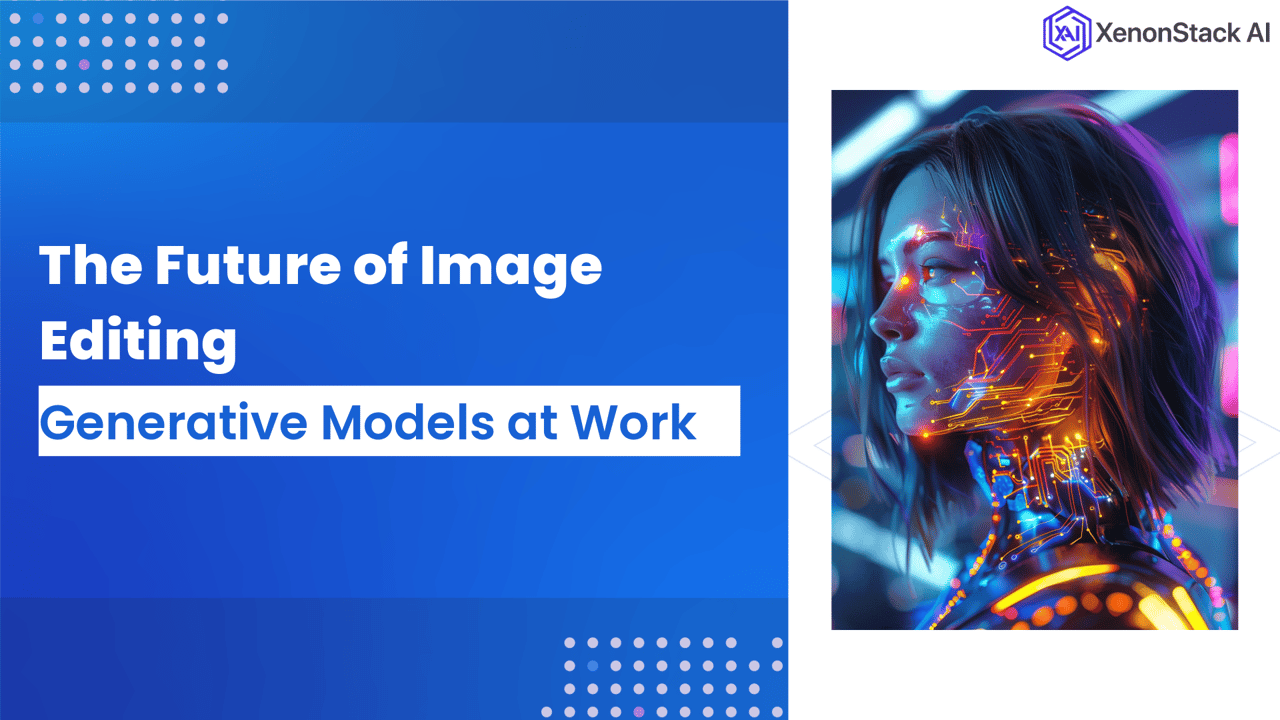
VAEs for Advanced Image Editing
While GANs focus on adversarial training, Variational Autoencoders (VAEs) approach image generation from a probabilistic perspective. A VAE works by learning to encode images into a latent space and then decode from that latent space to reconstruct the images. This latent space can be sampled to generate new images or to modify existing ones.
VAEs for Image Generation and Editing
VAEs are particularly useful for tasks that require smooth interpolation between images. For instance, a VAE can generate morphing effects, where one image smoothly transitions into another by traversing the latent space. This capability makes VAEs ideal for applications like facial attribute editing, where subtle changes in facial features are necessary.

Fig 2 - Variational Autoencoders
-
Inpainting with VAEs works by encoding an image with missing parts into the latent space and then decoding it while filling in the missing sections with plausible content.
-
Attribute swapping means that one can alter a specific aspect of an image, such as the age or gender of the people in a given picture, while little else changes in the picture.
Nevertheless, VAEs' main weakness is that the generated images are often blurred because they seek to make samples continuous and smooth in the latent space.
Transformers in Image Generation: Bidirectional Models
Transformers, originally designed for natural language processing (NLP) tasks, have entered the world of computer vision. Their ability to model long-range dependencies makes them suitable for image generation and editing tasks.
One such model applies the transformer architecture to images, treating them as sequences of pixels. However, transformer models have proven to be especially effective in bidirectional tasks where the context of the entire image is considered rather than just a sequence from left to right.
Bidirectional Transformers for Image Editing: Enter EdiBERT
A recent innovation in this space is EdiBERT, a bidirectional transformer inspired by BERT (Bidirectional Encoder Representations from Transformers), which is used in NLP. Unlike traditional transformers that sequentially generate images, EdiBERT can attend to the entire image simultaneously, allowing it to edit localized patches efficiently while considering global image coherence.
VQGAN and EdiBERT: Merging Generative Models with Image Editing
One of the most promising developments in generative image editing is the combination of Vector Quantized Generative Adversarial Networks (VQGAN) and EdiBERT, offering unprecedented control and realism in image editing tasks.
VQGAN: Vector Quantization Meets GANs
To support further analysis, VQGAN modifies traditional GANs through vector quantization, leading to better-structured latent representations. This model combines GANs' impressive image-generating ability with a highly discrete latent space more conducive to editing.
Discrete auto-encoder VQGAN
Where
𝐸(𝐼)𝑡=𝐸(𝐼)1,𝑧 is the feature vector of 𝐸(𝐼) 𝑎𝑡 𝑝𝑜𝑠𝑖𝑡𝑖𝑜𝑛 𝑙 and 𝑄𝑧 refers to quantization
-
VQGAN is very effective for tasks such as localized changes, where only a small area of the image needs attention, and the rest of the image can remain unaffected
-
That also indicates better protection of high-frequency details, which makes it appropriate for high-quality reconstructions.
EdiBERT: Transformer-Based Editing
While creating the images, the job is given to VQGAN. As soon as the image is created, EdiBERT comes into the picture to refine it. Namely, EdiBERT processes images as sequences of tokens, and BERT processes words in sentences. This allows for:
-
Image cleaning is a local process because the artefacts are detected, erased, and replaced by more likely values.
-
Filled in Painting, where one fills in subtitles of the image based on the content of the region of the image in question.
-
Collage-making or photo editing is when different parts of different pictures are joined together.
VQGAN, together with its partner EdiBERT, combines a strong basis for a high level of quality and control in local and overall image modification.
Key Applications of Generative Models in Image Editing
Generative models have been used in several image modification applications in art, graphics design, and medicine. Here are some of the most popular use cases:
Face Editing and Manipulation: Perhaps the most common use of generative models is in facial editing. Generative models employed in FaceApp allow users to age faces or remove wrinkles, add a smile, or perform gender swaps. These tasks are achieved by acquiring fine-grained feature descriptors of the face and then applying them for fine-tuning while preserving overall face identity.
Image Restoration and Inpainting: Generative models have shown great promise in restoring damaged images or filling in missing parts. Inpainting has been particularly useful in art restoration, where missing parts of ancient paintings or damaged photographs are reconstructed using context-aware generative models.
Style Transfer and Artistic Creation: Applications like DeepArt use generative models to apply the artistic style of one image (e.g., a famous painting) to another, effectively transforming any photograph into a work of art. Style transfer has been a popular area for creative AI, allowing artists and designers to explore new forms of digital art creation.
Super-Resolution: Super-resolution is the process of creating high-quality pictures from very small pictures that are of low quality. GANs have provided increased sharpening quality to improve up-scaled images to restore old photos or enhance video quality in real-time.
Image-to-Image Translation: As for models, CycleGAN, for example, is used for image-to-image translation, where one kind of image is converted into another. For instance, changing a daytime setting into a night setting or simply taking sketches and transforming them into articles with full-body illustrations. These applications are useful where the creation of animated movies, television advertisements, and computer games is required.
Challenges in Image Editing Using Generative Models
Despite their impressive capabilities, generative models face several challenges in image editing. Some of these challenges include:
-
Training Stability and Mode Collapse: GANs are notorious for their instability during training. The delicate balance between the generator and discriminator can be difficult to maintain, leading to mode collapse, where the generator produces a limited variety of outputs. Researchers continue to explore new architectures and training techniques to mitigate this issue.
-
Data Bias and Ethical Concerns: Generative models are only as good as the data on which they are trained. If the training data is biased (e.g., mostly images of a certain demographic), the model may generate biased or unfair outputs. Moreover, the ability to manipulate and generate realistic images raises ethical concerns around misinformation, deepfakes, and privacy.
-
Computational Complexity: Training and fine-tuning generative models, especially transformer-based architectures, can be computationally expensive. Large models require large computational resources and memory, limiting accessibility for smaller organizations or individual users.
The Future of Generative Models in Image Editing
Conclusion: Advancing Visual Creativity with AI
The journey of computer vision generative models is still in its early stages, but the innovations already available hint at a future where AI not only automates repetitive tasks but also inspires and augments human creativity.
As we move forward, it will be critical to address the challenges and ethical considerations these technologies pose, ensuring that they are used responsibly and for the greater good. Ultimately, generative models have the potential to revolutionize industries ranging from entertainment to healthcare, transforming how we perceive and interact with the visual world.
Stay updated with the latest trends in AI-driven visual creativity






